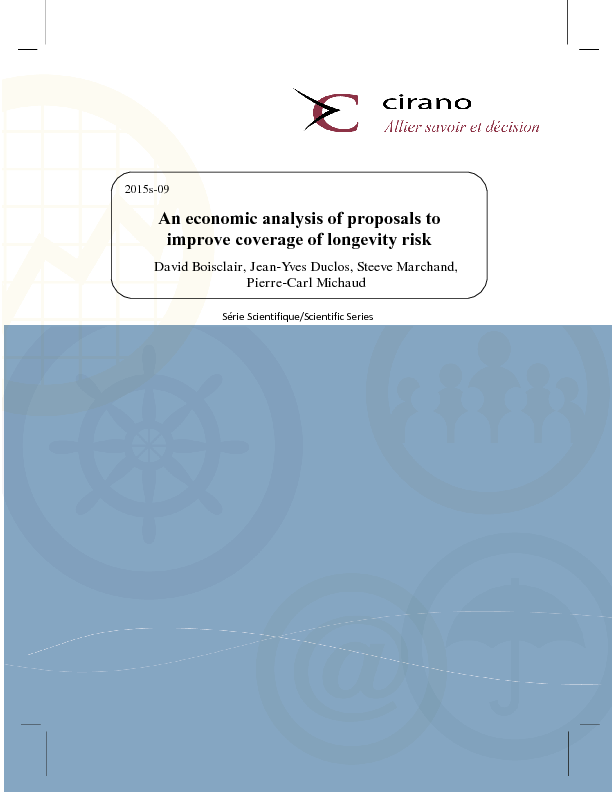An economic analysis of proposals to improve coverage of longevity risk
We use
simulation methods to analyze the impacts of certain proposed reforms to
improve the coverage of longevity risk. This risk, which may in principle be
adequately covered by classic defined-benefit pension plans, has been of
particular interest in Quebec for some years now, notably due to the decline in
the participation to such plans. Recent proposals which aim to increase the
coverage of longevity risk mostly deal with expansion of the “2nd pillar"
of the retirement income system, currently comprised of the Quebec Pension Plan.
We therefore consider a key proposal of the D’Amours committee (the longevity
pension), in addition to two other proposals: that of Mintz and Wilson, which
aims to increase the generosity of the current regime, and that of Wolfson,
which introduces a concept of contribution and benefit rates differentiated by
income. Using data from Statistics Canada surveys, we analyze the internal rate
of return (IRR) of these proposals for various types of individuals taking into
consideration inequality in life expectancy, temporal variability of income,
and interactions with taxation and the different retirement income support
programs. We contrast the results with those obtained when opting instead for
additional contributions into existing voluntary savings vehicles combined with
a basic annuity purchased at retirement.
[ - ]




